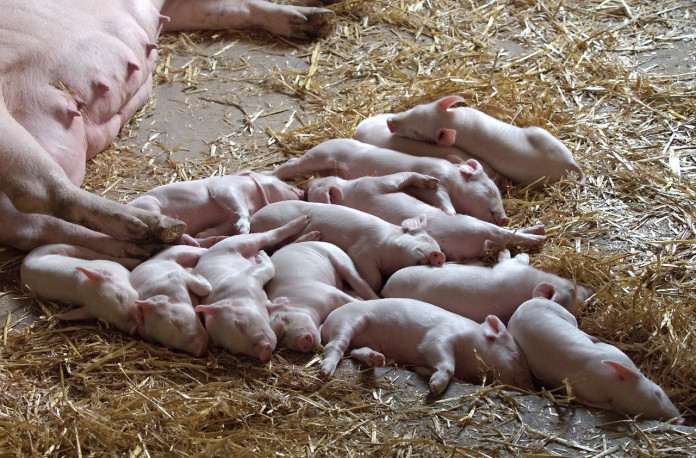For some producers, birthing season may be well underway while others are still preparing for those first calves and lambs to hit the ground. To make sure farmers and farm workers are ready to go when the time comes, consider preparing a birthing kit.
1Pens and equipment
Before birthing season gets into full swing, make sure pens are prepared with clean, dry bedding for new mothers and their babies. Bedding should be changed after every birthing to prevent the spread of disease.
Make sure, if birthing in the colder months, the barn is plenty warm for the newborns and free of drafts. Making sure equipment and pens are ready ahead of time means less stress on you and the animal.
2Protocol
Develop a birthing protocol, or plan, and make sure all employees involved are familiar with it and have access to it. A birthing protocol should include the veterinarian’s contact information right at the top, along with manager/farm owner contact numbers in case of an emergency.
The protocol may list what to look for once an employee notices an animal going into labor, such as warning signs that the animal may be in distress or in need of assistance with the birth. It may also list detailed instructions on what should be done during the various stages of labor and birthing of the animal. Protocols can be posted near the birthing area.
3Supplies
Put together a bag of these supplies or make sure they are close by: Calf/lamb puller, disinfectant, gloves, lubrication (non detergent soap and warm water works best), paper towels, frozen colostrum, milk tuber, electrolytes, syringes, bottles, digital thermometer, and iodine.
For animals born during the coldest days of winter, have heat lamps and blankets available. Other things to have close by are ear tags and taggers, and other markers for identification.
4House kit
As most farmers know, livestock tend to have impeccable timing when it comes to dropping that first calf or lamb. It could be 5 below or in the dead of night when you need to make a run to the barn.
A house kit, kept close to the door, could include flashlights and batteries, gloves and hats (and other winter gear), towels, a human first aid kit, and other items you always seem to forget once you have made that mad dash out to the barn.
Sources: Oklahoma State Extension, University of Illinois Extension, Penn State Extension, and hobbyfarms.com.
(Farm and Dairy is featuring a series of “101” columns throughout the year to help young and beginning farmers master farm living. From finances to management to machinery repair and animal care, farmers do it all.)
More Farming 101 columns:
- 5 tips for marketing your farm
- How to develop farm mission, vision statements
- 5 tips for setting farm goals
- 2 types of livestock insurance policies
- 6 things you need to know about WFRP plans
- 3 basics of crop insurance
- How does liability insurance work on the farm?
- Why do I need farm insurance?
- How to understand and use Ohio’s CAUV
- How to utilize the Pa. Clean and Green Act
- 9 tips for filing farm taxes
- 8 reasons record keeping for taxes is essential
- 5 tips for post-harvest storage
- 7 tips for family meetings on the farm
- 4 tips for balancing your farm and family
- 4 tips for communicating on the family farm
- 4 tips for firing an employee
- 6 tips for keeping good farm help
- 4 tips for recruiting farm labor
- 5 general farm labor laws
- 4 tips for employing minors
- 4 tips for PTO safety
- 5 things young farmers should know about finances
- The farm balance sheet
- 5 items for your farm’s cash flow statement
- Personal and business records: Keep them separate
- What to include in your farm business plan
- How to approach a lender: Tips for getting a farm loan
- How to use microloans to get your farm started
- Saving for the future: 6 tips for young farmers
- How to create a farm safety kit
- 5 tips for child safety on the farm
- 4 tips for transporting livestock
- 5 ways to better understand tractor stability
- 6 farm equipment hacks













